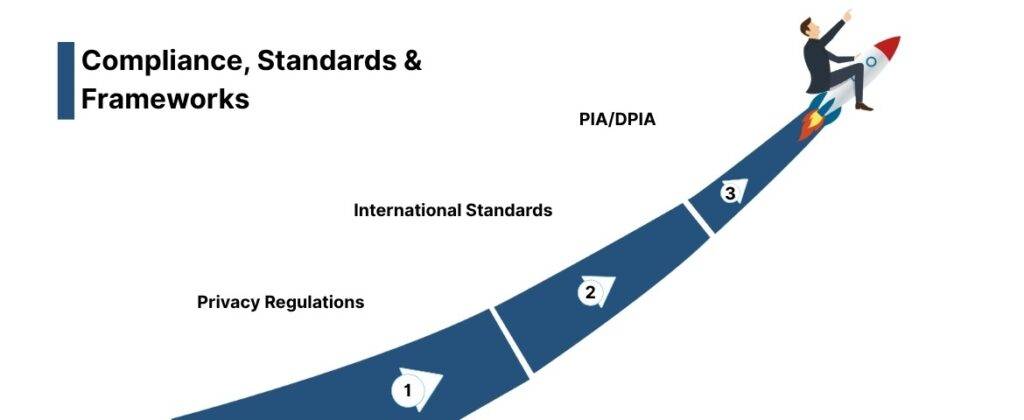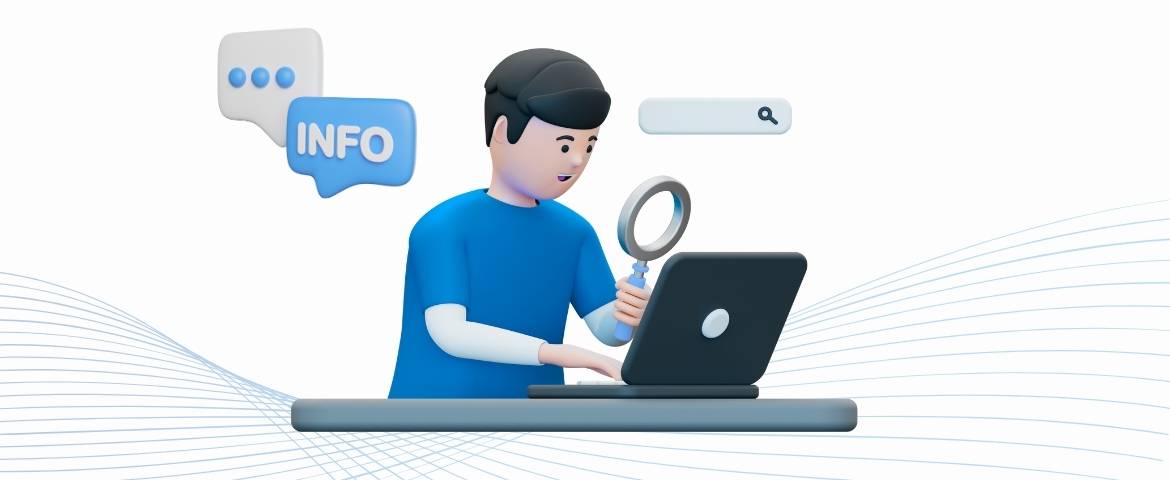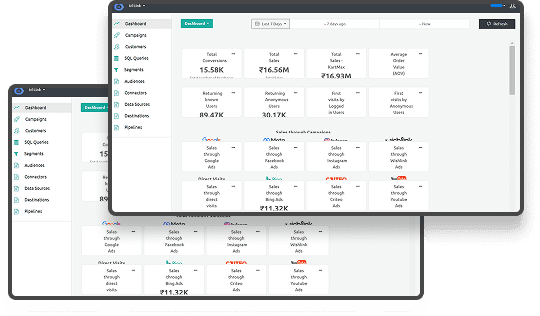Best Practices for Handling PII Data
Have you ever thought about how exposed your customer data really is every time you launch a campaign or collect leads? In 2025, scam encounters in the US where individuals shared personally identifiable information (PII) surged by 43% compared to last year. That sharp rise highlights how fragile data security has become. If your business relies on data-driven marketing, e-commerce tracking, or personalized advertising, mishandling PII can mean losing both trust and revenue. This guide walks you through practical best practices for handling PII securely, so you can protect user data while keeping your marketing strategies strong and compliant.
Quick Overview
- Personally Identifiable Information (PII) includes any data that can identify an individual, such as names, emails, and payment details.
- Emphasize data minimization, strict retention policies, and maintaining confidentiality to mitigate risks and stay compliant with privacy regulations.
- Implement encryption, access controls, and real-time monitoring to protect PII throughout its lifecycle, from collection to storage.
- Align with global privacy laws like GDPR and CCPA, establish clear data handling policies, and train your team to safeguard sensitive information.
What is PII?
PII, or personally identifiable information, refers to any data that can identify an individual directly or indirectly. It includes details like names, email addresses, phone numbers, payment data, and even browsing behavior collected during your campaigns. When you understand what qualifies as PII, you can handle customer data responsibly, strengthen compliance with privacy laws, and ensure your PII data handling practices protect both your brand reputation and customer relationships.
Once you have a clear grasp of what qualifies as PII, the next logical step is to dive into how it should be classified for proper protection.
What Are the Two Types of PII?
Personally identifiable information (PII) is categorized into two types: Sensitive PII and Non-Sensitive PII. Understanding these types is crucial for managing and securing data effectively. Here are the two types explained:
1. Sensitive PII
Sensitive PII includes data that could cause harm or lead to identity theft if exposed. Examples of sensitive PII include Social Security numbers, passport numbers, and financial account information. As a digital marketer, protecting sensitive PII is vital to comply with privacy regulations like GDPR and CCPA. Mishandling this data can result in severe legal consequences and damage to your brand reputation.
2. Non-Sensitive PII
Non-sensitive PII refers to data that can identify an individual but doesn’t pose a significant risk on its own. Examples include names, email addresses, and phone numbers. While this data is not as vulnerable as sensitive PII, it still requires protection. Improper handling of non-sensitive PII can affect your company's compliance standing and may lead to trust issues with customers.
It’s important to understand the potential impact if this information were to fall into the wrong hands. The consequences can be far-reaching, so let’s take a closer look at what happens when PII is exposed.
What Happens When PII Is Exposed?
When personally identifiable information (PII) is exposed, the impact extends far beyond a simple data loss. You’re not just risking customer privacy, you’re putting brand credibility, campaign performance, and compliance at stake. Here’s what typically happens when PII falls into the wrong hands:
1. Legal and Financial Consequences
You could face regulatory penalties for non-compliance with privacy laws such as GDPR, CCPA, or HIPAA. These fines often reach millions, draining resources that could otherwise fuel growth or innovation. Beyond penalties, handling legal proceedings and restitution can stall marketing initiatives and disrupt business continuity.
2. Damage to Brand Reputation
When customers hear about a data breach, their confidence in your brand drops instantly. You may lose subscribers, advertisers, and campaign partners who no longer trust your data security. Repairing that damage takes far longer, and costs far more, than preventing a breach in the first place.
3. Identity Theft and Fraud
Exposed PII gives cybercriminals the tools to impersonate your users, steal financial data, or manipulate ad accounts. Such incidents can trigger account suspensions or revenue losses from fraudulent activities. You also risk permanent damage to customer relationships as individuals associate your brand with unsafe data practices.
To avoid these costly outcomes, we’ll now walk through the best practices that will help you properly manage PII and ensure it stays secure throughout its lifecycle.
Also read: Understanding Steps in Achieving Privacy-First Marketing
Best Practices for Handling PII
Implementing strong technical and architectural controls is essential for safeguarding PII throughout its lifecycle. The following best practices form the foundation for secure, compliant, and scalable PII data handling in your organization.
1. Discover, Classify & Map PII
Before protecting PII, you need to know where it lives. Automated tools like data catalogs and scanners help you find, label, and organize every piece of sensitive information across your systems. Keeping a clear map ensures no hidden data slips through the cracks. Ingest IQ by Ingest Labs supports this by providing accurate, server-side tracking and real-time data monitoring across your digital platforms.
2. Access Control & Least Privilege
Not everyone needs access to everything. Assign roles carefully so each user or system can only reach what’s necessary. Regularly reviewing permissions keeps your PII data safe and reduces the chance of insider risks. With Ingest ID, Ingest Labs ensures secure data access through centralized customer identifiers and precise user-level permissions.
3. Encryption (At Rest & In Transit)
Encryption keeps PII unreadable to anyone who shouldn’t see it. Use secure protocols like HTTPS for data in motion and AES-256 for stored data. Updating encryption keys regularly keeps your protection strong and compliant. Ingest IQ empowers your encryption strategy by securely managing data flow and enabling encrypted transmission to trusted storage or analytics platforms.
4. Tokenization, Masking, Pseudonymization & Anonymization
When possible, replace real PII with fake or hidden values. These methods let you use customer insights safely for testing or analytics. It’s an easy way to keep privacy intact without slowing your campaigns. Event IQ from Ingest Labs helps you anonymize customer data effectively, ensuring privacy-first analytics without sacrificing insight accuracy.
5. Secure Storage & Isolation
Store sensitive data separately from general business systems. Isolate testing and production environments to prevent mix-ups or leaks. Backup plans and segmented networks add another layer of protection for your PII. Ingest IQ supports secure storage by managing data flow into protected environments and ensuring integrity through compliant tagging and streaming.
6. Logging, Monitoring & Audit Trails
Keep an eye on who’s accessing your data and when. Continuous monitoring helps you catch odd behavior early and stay compliant with privacy laws. Detailed logs make investigations and audits smoother when required. Event IQ enables real-time monitoring and cross-channel analytics, allowing you to track data events transparently and strengthen compliance reporting.
7. Key Management & Cryptographic Hygiene
Encryption only works if your keys are managed carefully. Rotate them often, store them securely, and separate duties for safety. Good key management practices ensure your encrypted data stays locked even during incidents. Ingest IQ simplifies cryptographic hygiene by securing key integrations and managing encrypted communications between your data systems.
8. Secure Deletion & Data Sanitization
When data is no longer needed, delete it completely. Use verified deletion methods like overwriting or cryptographic erasure to ensure nothing can be recovered. Regular cleanup keeps you compliant and minimizes risk. With Event IQ, Ingest Labs supports compliant data deletion workflows, ensuring secure data lifecycle completion across all customer interaction points.
9. Data Minimization & Purpose Limitation
Collect only the personal data necessary for a defined business purpose to reduce exposure and misuse risks. Every dataset should have a legitimate purpose, ensuring that your operations remain compliant with privacy laws and user expectations. Ingest ID reduces data by centralizing only necessary customer info for effective segmentation and engagement.
10. Storage Limitation & Retention Policies
Retain PII only for as long as it serves a valid operational, legal, or regulatory purpose. Establish structured retention schedules that guide when and how data should be securely deleted or anonymized. Consistent enforcement of retention policies prevents unauthorized access, data hoarding, and compliance violations. Ingest IQ enforces retention policies by managing data flow, tagging, storing, and deleting data as scheduled.
11. Accuracy, Integrity, and Confidentiality
Ensure all PII remains accurate, up-to-date, and protected against unauthorized changes or breaches. Implement strong verification, encryption, and access control measures to maintain the integrity of stored and transmitted data. Ingest IQ and Ingest ID work together to ensure data integrity, with secure tracking, verification, and encryption.
12. Accountability & Transparency
Assign clear ownership for PII governance to demonstrate accountability in every stage of data processing. Maintain transparent communication with customers and stakeholders about how their information is collected, stored, and used. Regular audits, policy reviews, and reporting systems reinforce your organization’s commitment to responsible handling of PII. Event IQ offers comprehensive reporting, tracking, and auditing tools to help ensure accountability and transparency in data usage.
13. Incident Response & Breach Handling
Having a well-documented plan for data breaches is critical. Ensure your team knows exactly what to do if PII is exposed, and assign clear roles to swiftly manage the situation. Regular drills and preparedness activities can help minimize the impact when something goes wrong. Ingest Labs’ Event IQ helps you track and monitor PII events across systems, enabling faster incident response with detailed logs and reporting.
14. Building Strong PII Policies and Team Practices
Establishing clear policies and training your team are essential for securely handling PII. Define how PII is collected, used, stored, and deleted, and ensure all employees understand their role in safeguarding this data. Regular audits, incident response plans, and third-party vendor controls will help maintain compliance and reduce risks of data breaches. Ingest Labs helps you implement these safeguards by providing secure tracking, real-time monitoring, and privacy-first workflows for all your marketing data.
Next, we'll break down how you can put these strategies into action with practical tools and processes that ensure your organization stays compliant and secure.
Compliance, Standards & Frameworks
Handling PII securely requires aligning your practices with global privacy laws and recognized security standards. Doing so ensures customer trust while minimizing regulatory risks. Here are key compliance measures and frameworks to adopt for effective PII management:

- Privacy Regulations
- Map your PII practices to relevant laws like GDPR, CCPA/CPRA, or HIPAA, depending on your region and data type.
- Track updates regularly to avoid fines or compliance gaps that could impact campaigns or customer trust.
- Ingest Labs’ Event IQ helps you manage customer consent and maintain privacy compliance across campaigns and platforms.
- International Standards
- Adopt ISO/IEC 27701 to extend your information security management system with privacy-focused controls.
- For cloud environments, follow ISO/IEC 27018 to safeguard PII stored or processed in cloud platforms.
- Ingest IQ supports ISO-aligned secure data flow, enabling safe collection and tracking across web and mobile applications.
- Privacy / Data Protection Impact Assessments (PIA/DPIA)
- Evaluate high-risk data processing with PIAs to understand potential privacy risks and implement mitigations.
- Use assessments to optimize marketing workflows and ensure analytics or personalization initiatives remain compliant.
- Ingest ID centralizes customer identifiers, allowing you to assess data risks and improve secure handling across platforms.
Final Thoughts
Handling PII effectively is critical for protecting customer trust, staying compliant with privacy laws, and safeguarding your marketing data. Implementing best practices, technical controls, and organizational safeguards ensures that sensitive information is managed responsibly across all channels. By prioritizing PII management, your business can reduce risks, improve analytics accuracy, and optimize customer experiences securely.
Ingest Labs provides powerful solutions to help you manage PII across web and mobile platforms seamlessly. With Ingest IQ, Ingest ID, and Event IQ, you can track data accurately, unify customer profiles, and maintain privacy compliance effortlessly. These tools empower you to enhance conversions, orchestrate cross-channel campaigns, and gain actionable insights while keeping sensitive data secure.
Protect your customer data and optimize conversions. Contact Ingest Labs today to implement privacy-first PII management solutions.
Frequently Asked Questions (FAQs)
1. How should PII be handled?
PII should be collected, stored, and processed securely, following privacy laws like GDPR or CCPA. Implement access controls, encryption, and monitoring to minimize risks. Regular audits help ensure compliance and prevent unauthorized exposure.
2. What are PII examples?
PII includes any data that can identify an individual, such as names, email addresses, phone numbers, payment details, or login credentials. Sensitive PII, like Social Security numbers or health records, requires stricter protection measures.
3. What is the best way to ensure proper data handling of PII?
Implement technical controls like encryption, tokenization, and access management, alongside organizational policies and employee training. Monitor activity continuously and run privacy impact assessments for high-risk data.
4. What is the best way to handle documents containing personally identifiable information (PII)?
Store documents in secure, access-controlled systems, separate production from testing environments, and apply encryption. Sanitize or securely delete outdated documents to prevent unauthorized recovery.
5. How can businesses maintain compliance while using PII for marketing purposes?
Use privacy-first tools to track and analyze customer data while honoring consent. Adopt first-party identifiers, server-side tracking, and unified customer profiles to optimize campaigns safely.






